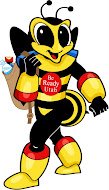Local and state governments share the responsibility for protecting their citizens from disasters, and helping them recover when a disaster strikes. In some cases, a disaster is beyond the capabilities of the state and local government to respond. In these cases the governor may request assistance from the federal government. Before the governor requests federal assistance a FEMA/State Preliminary Damage Assessment is typically completed to determine if federal assistance is needed. Factors considered during this assessment include:
- Amount and type of damage (number of homes destroyed or with major damage).
- Impact on the infrastructure of the affected areas.
- Imminent threats to public health and safety.
- Level of insurance coverage in place for homeowners and public facilities.
- Assistance available from other sources (federal, state, local, and voluntary organizations).
Based on the governor's request, the president may declare that a major disaster or emergency exists and activate federal programs to assist in the response and recovery effort.
The Three Categories of FEMA AssistanceIndividual Assistance- aid to individuals and households. This program provides money and services to people in the declared area whose property has been damaged or destroyed and whose losses are not covered by insurance. FEMA programs are designed to meet people's basic needs. People will find that the most common form of assistance is typically a loan from the U.S. Small Business Administration. Individual Assistance will not make disaster victims whole. Potential assistance includes:
- Temporary housing and repair to ensure a safe place to live.
- Disaster-related medical expenses.
- Funeral expenses.
- Replacement of some essential personal property.
- Transportation costs.
- Storage expenses.
- Other forms of assistance can include crisis counseling, legal services and Disaster Unemployment Assistance.
Public Assistance- aid to state and locally owned public facilities for eligible emergency services and the repair, restoration, reconstruction, or replacement of a public facilities or infrastructure damaged by the disaster. Certain private non-profit entities may also be eligible.
Hazard Mitigation Assistance - funding for measures designed to reduce future losses to public and private property. These funds are provided to the state, which determines what projects to fund.
This information is also found in our Guide to Personal and Family Preparedness handout.










